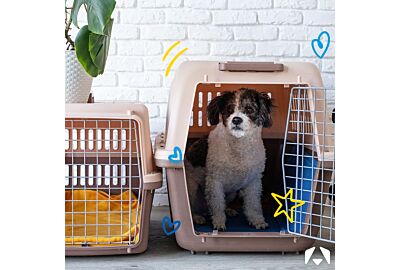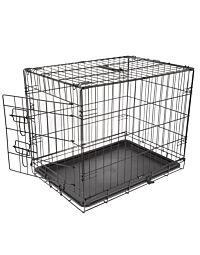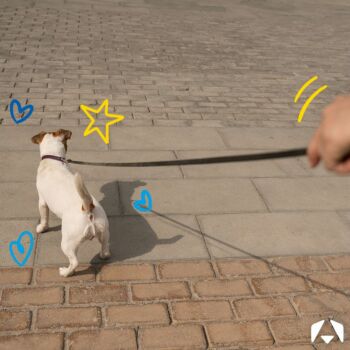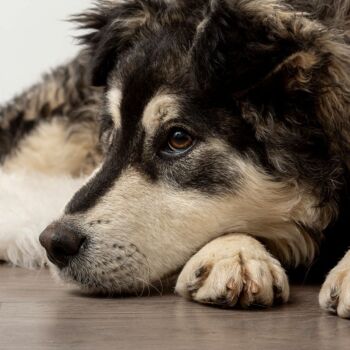Dog Crate Training: A Step-by-Step Guide
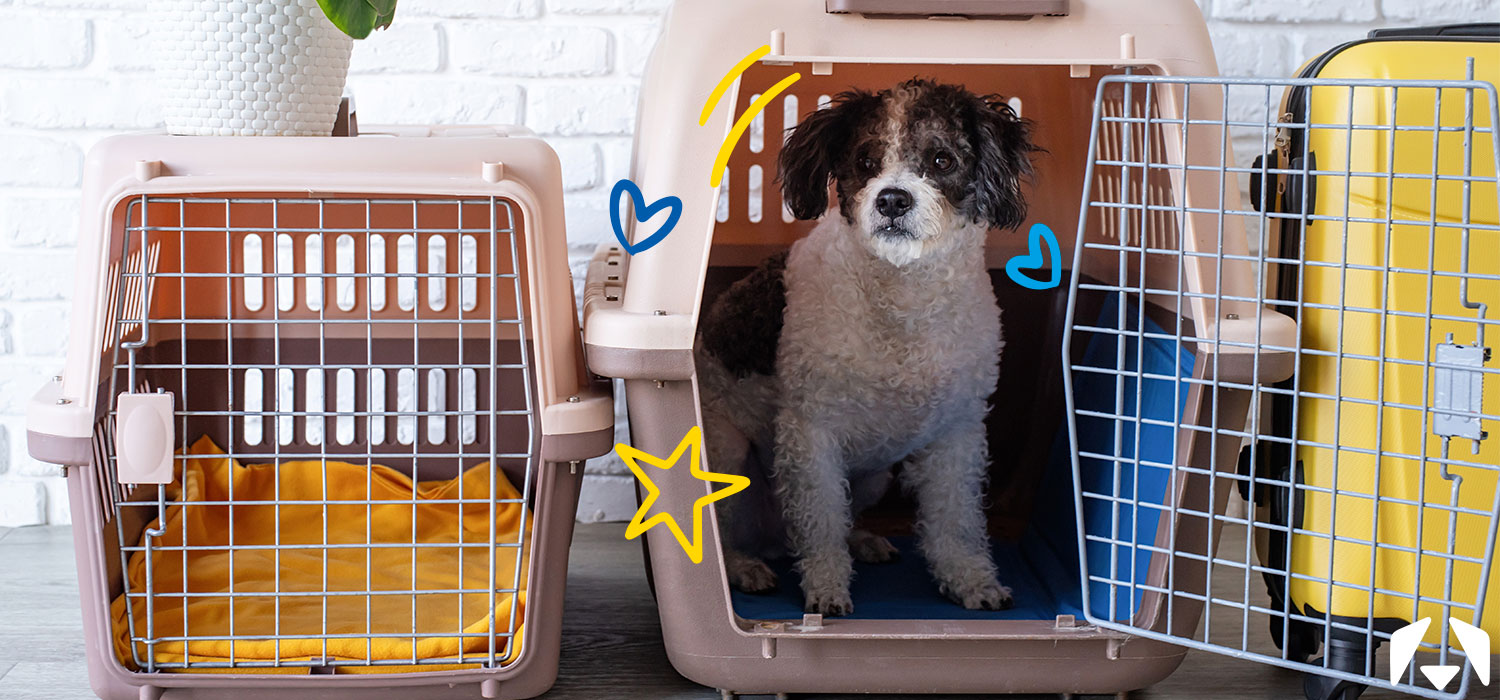

Crate training is important for dogs, giving them a safe space that benefits their well-being. Dog crate training is not about locking up dogs, but about making a positive environment for them. This guide will walk you through the process of crate training your dog in way that’s fun and positive for both you and your furry friend.
The Benefits of Crate Training
Crate training your dog comes with a whole host of benefits. It's not just about providing a place to stay; it's about making sure they feel safe and comfortable. Here's a quick rundown of the top benefits of crate training a puppy or dog:
- Gives your dog their own space to relax and retreat.
- Aids in housebreaking as dogs naturally avoid soiling their sleeping area.
- Eases the adjustment for dogs in new environments.
- If the crate is suitable for travel, it can make transporting your dog much easier.


Understanding Your Dog’s Learning Process:
Before jumping into the training process, it’s important to understand how dogs learn. Here are a few basic dog training tips to follow:
- Short Training Sessions: keep sessions around 5-10 minutes to maintain your dog’s attention. This will be much more effective than one longer session.
- Quiet, Distraction-Free Area: get the basics down in a place where your dog can focus without any interruptions. Later, add distractions so your dog can get used to different environments.
- Positive Reinforcement: training should always involve praise and rewards to encourage the desired behaviour. We recommend using high-value treats that your dog loves but doesn’t get often.
- Patience and Calmness: only train your dog when you’re in a good mood to create a stress-free learning environment. Dogs possess a high sensitivity to human emotions, so they can detect when you’re stressed or grumpy.
End on a positive note: end each training session with an exercise your dog can do well to keep it positive.


How to Crate Train a Dog
Dive into crate training with our seven-step guide, designed to make the process straightforward and positive for both you and your dog. Let's get going!
Step 1: Choosing the Right Crate
- Size is Important: Make sure the kennel provides large enough for your dog to stand, rotate, and lie down comfortably.
- Type of Crate: Select from various crate types, including wire, plastic, or soft-sided, based on your dog's requirements and your space. Soft-sided crates are convenient for their portability, ideal for setting up in different settings. For car trips, it's better to use a strong wire crate for extra safety and stability against moving objects."
Step 2: Introduce the Crate
- Comfort is Key: Make your dog's crate comfortable by putting their bed, blanket, water bowl, treats, and toys inside. This will encourage them to explore. To reduce draughts and sounds from outside, you can use a blanket to cover the top and sides of the crate.
- Create Positive Associations: Introduce your dog to the crate in a positive manner. Place it in a common area and leave the door open to allow them to enter and exit freely. When they enter, create positive associations by rewarding them with a treat.
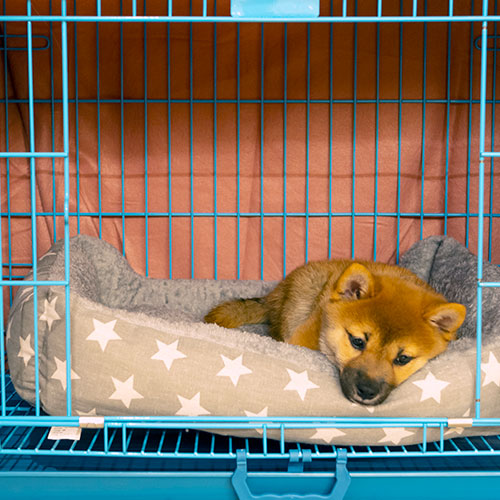

Step 3: Feeding Meals in the Crate
- Build Positive Connections: start to feed your dog near their crate. Then, gradually move the food bowl inside the crate to create a positive association.
Step 4: Gradual Introduction to Being Crated
- Short Periods: Begin with short crating periods while you’re home. Start with a few minutes and gradually increase the time. If your dog shows signs of worry when the crate door is closed, like whining or trying to get out, then go back to the step they feel comfortable doing.
- Keep Persisting: Spending time on this step is important to ensure your dog is comfortable and confident with crating. Remember to have treats either in the crate or ready to drop into the crate to reward them when they’re relaxing.
- Consistent Command: Use a consistent command to encourage your dog to enter the crate, like “Crate” or “Bed”.
Step 5: Extending Crate Time
- Gradually increase the length of time your dog spends in the crate as they become more comfortable, especially when you're not home.
Step 6: Crate Training and Nighttime:
- Place the Crate in Your Bedroom: Initially, place the crate in your bedroom at night to provide comfort and security.
- Gradual Transition: Once they become accustomed to the crate, you can gradually move it to the desired location.
Step 7: Dealing with Whining or Barking
- Wait it Out: Wait for your dog to be quiet before letting them out if they whine or bark, to avoid reinforcing the behavior.
- Ensure Needs are Met: Before crating, ensure your dog has had enough exercise, water, and a bathroom break.
Conclusion
Crate training is a process that requires patience and consistency. By following these steps and maintaining a positive attitude, your dog will soon view the crate as their own safe and comfortable space. Remember, the crate should always be associated with positive experiences and never used as a punishment. With time and proper training, your dog will find comfort and security in their crate, making it a beneficial tool for both their well-being and your peace of mind.

